Hitting theaters this weekend is Meg 2: The Trench, the followup to 2018’s The Meg, which delivered a story about a megalodon that emerges from the ocean’s depths to terrorize the crew of an underwater research facility and nearby swimmers. What really sets these two films apart from its peers is the sheer scale of the titular beast, as its size rivals that of the prehistoric dinosaurs. To celebrate the film that depicts an immense fish wreaking havoc on humanity, we’ve rounded up some of the best films that deliver animals taking out their vengeance on whoever is in their path.
Videos by ComicBook.com
The horrors of the untamed world have regularly become the subject of horror movies, with virtually every creature in the animal kingdom ultimately taking center stage in these horrific narratives. As proven by The Meg and the recent trend of successful horrors like The Shallows and 47 Meters Down, sharks might be the animal that most regularly becomes the villain, likely due to the animals themselves and the ocean both being rife with a mysterious intimidation.
While we’ve previously highlighted horror films that specifically feature sharks, there are plenty of other entertaining horror films that feature all manner of creature. Given that Steven Spielberg’s Jaws dominates any list involving animal attacks and the direct influence it had on Meg 2: The Trench, we’re opting to leave it off this list, despite its undeniable accomplishments.
Scroll down to see our picks for 10 more of the best animal attack horror movies!
The Birds (1963)
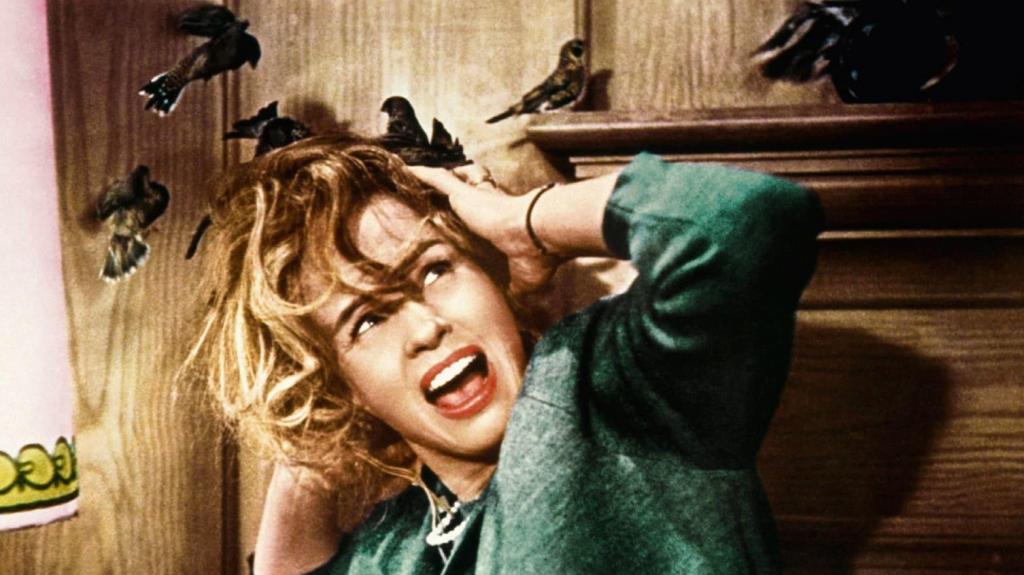
Even Alfred Hitchcock, considered by many to be one of the greatest filmmakers of all time, knew the inherent unease of seeing massive flocks of winged animals that humanity seemingly has an unspoken agreement with to avoid.
In The Birds, a small coastal community finds itself under siege by a variety of local species, including gulls, sparrows, and crows, with the attacks starting off small and specific to individuals before the chaos escalates to the whole town falling under attack.
One of the most effective components of the film is that, rather than there being a specific inciting incident that ignites the chaos, the birds attack without warning and ultimately leave without explanation. Additionally, birds are rarely considered dangerous, as compared to other well-known predators, until they all flock together and attack in unison. After witnessing The Birds, audiences will surely think twice about walking by a flock gathered together in a tree despite previously feeling relatively safe in the company of the animals.
Orca (1977)
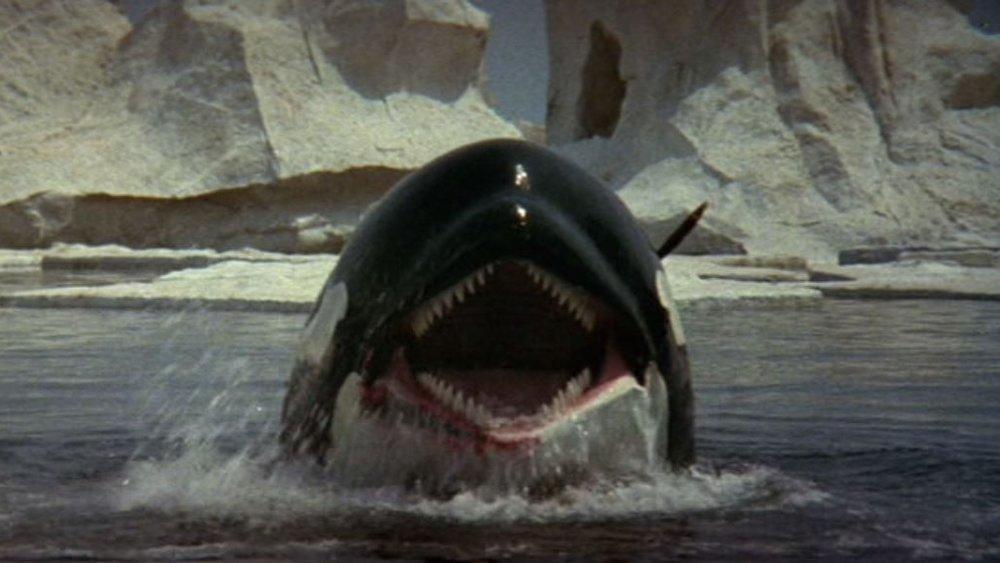
The great white shark isn’t the only apex predator in the ocean, a fact that Jaws ripoff Orca aimed to remind audiences about, though by focusing on a marine mammal, the adventure was able to inject a bit more intellect into the antagonizing animal.
When a fisherman hopes to capture an orca to sell to a zoo, he inadvertently wounds it, leading not only to its death but also to the death of the calf it was carrying. Its mate vows revenge against the fisherman, terrorizing the harbor community in hopes of bringing the man responsible out into the ocean for a final showdown.
Setting aside the overall outlandishness of the premise, what sets Orca apart from its fellow Jaws ripoffs is that the audience can completely sympathize and even support the titular creature’s deadly path of revenge. While the protagonist is a likable enough figure, played by Richard Harris, the brutal moments of a killer whale’s death and the fisherman’s denial of responsibility offer up a literal and figurative conflict of man trying to exert control over the natural world.
Piranha (1978)
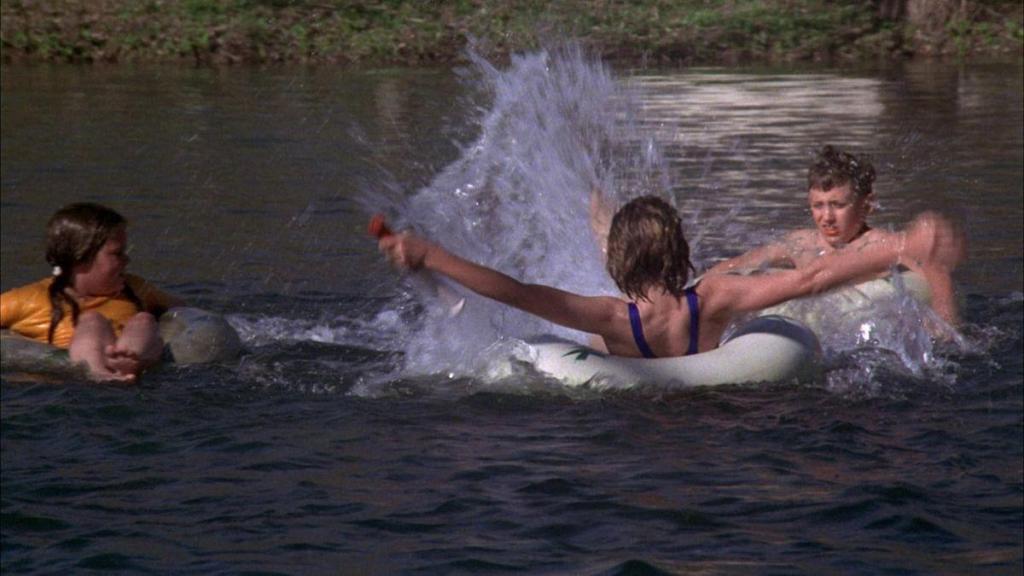
Jaws proved that taking an aquatic animal and depicting them as bloodthirsty monsters was a box-office and critical success, leading to countless imitators that aimed to recreate the familiar formula. Sharks are easily the most recognizable aquatic predators, though piranha aren’t far behind.
Unlike Jaws or The Birds, the bloodthirsty animals in Piranha aren’t an example of nature going rogue, but are the result of scientific engineering. When a young couple is killed while skinny-dipping in a pool at an abandoned military base, an investigation into their disappearance results in the pool being drained, allowing the genetically modified fish to infiltrate nearby bodies of water to devour anything in their path.
While the film might not be entirely frightening, it’s fully entertaining, delivering both violence and laughter to viewers.
Prophecy (1979)
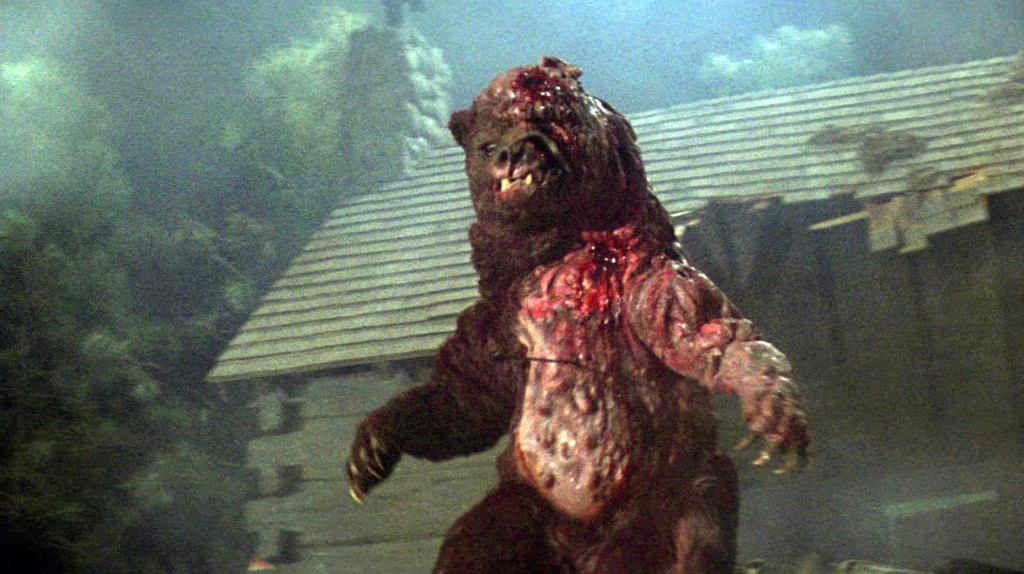
In the vein of Piranha, Prophecy serves as a cautionary tale of the deadly impact human civilization has on an ecosystem, as you never know what monstrosity might be created in the wake of “progress.”
Researchers head to a small town in Maine to ascertain the impact of a new lumber yard, discovering that fish in nearby waters have begun growing to immense sizes. Aquatic animals aren’t the only ones to be subjected to bizarre mutations, as a monstrous bear creature begins fatally attacking many citizens of the nearby town.
The conceit of man’s impact on nature isn’t the only thing Prophecy shared with Piranha, as this film also serves up equal doses of humor and horror, in addition to one of the more unique creature designs of the subgenre.
Cujo (1983)

Since the debut of Stephen King’s novel, “Cujo” is a nickname given to virtually any dog that appears to be violent or angry. This image of an angry dog was aided by the film adaptation of his novel, which offers a more grounded approach to animals on the attack.
After a saint bernard chases a rabbit into its den, it becomes infected by a bat with rabies and starts creating carnage in its journey back home, no matter who or what stands in his way. When a mother and son’s car breaks down near Cujo, they are trapped in their vessel as the creature poses an intimidating threat.
Virtually everyone has had at least one bad encounter with a dog, with Cujo taking that concept to its extreme. While the film is compelling and effective, we can’t help but feel bad for the dog that started the film as nothing more than a big, cuddly canine.
Arachnophobia (1990)
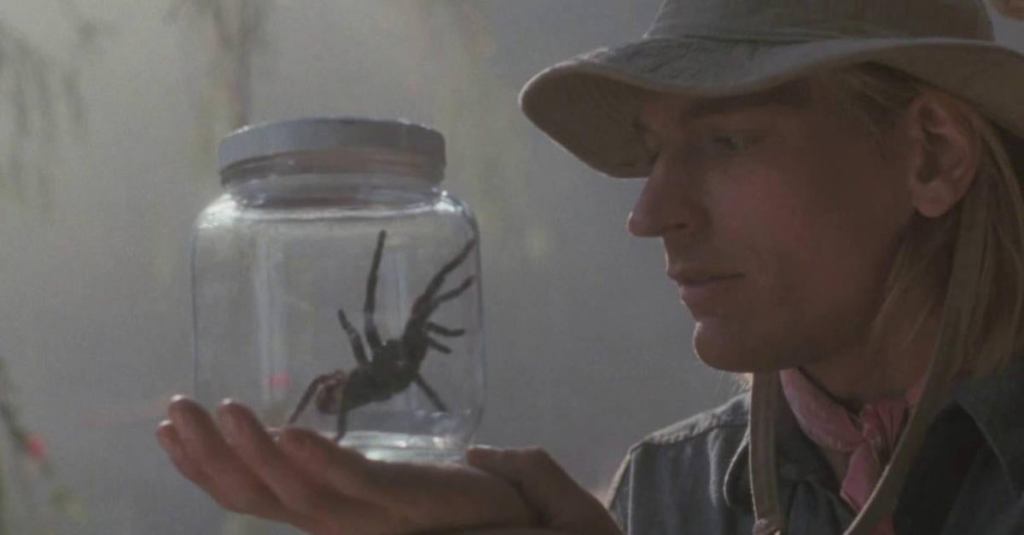
Similar to how the grounded and realistic ways Cujo plays on primal fears of large, domesticated animals, Arachnophobia cashes in on seeing creepy crawlies invading your house and potentially hiding just out of sight.
After a researcher is killed in a South American rainforest by a venomous tarantula, the body is shipped back to his small hometown, with a deadly species of spider also hitchhiking along with the corpse. The invasive species begins to infiltrate various houses and barns, leaving a trail of bodies in its wake.
A majority of interactions humans have with spiders end up with the eight-legged critter becoming a casualty, but Arachnophobia plays on that instinctive fear we have of the arachnids. Emphasizing those horrors is that many scenes use actual spiders, inspiring countless chills to run down our spines.
Anaconda (1997)

The premise of Jaws was that a larger-than-life shark terrorized a small beach community, regardless of human interference. Anaconda attempted to emulate this structure, as there was nothing special about the animal other than its size was slightly exaggerated, which apparently resulted in it becoming a bloodthirsty monster.
When a documentary crew heads into the Amazon in hopes of catching a glimpse of a remote tribe, they end up crossing paths with a snake hunter who leads them on an expedition to capture a massive anaconda, only for the crew to suffer one fatal interaction after another.
Anaconda might not have genuine thrills, but it offers hilarious special effects, ridiculous acting performances, and endlessly quotable bits of absurd dialogue. It might be tough calling the film good, but it’s incredibly watchable.
Lake Placid (1999)
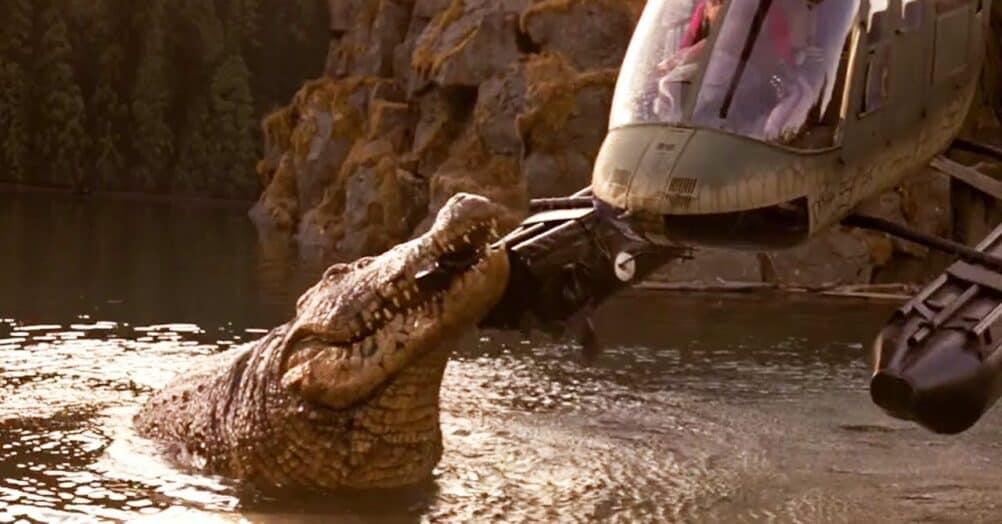
Seemingly following the effectiveness of Anaconda, Lake Placid took lessons from that creature feature but pushed the premise even further, both in its antagonist’s size and in the movie’s overall absurdity.
After a diver and various animals near a serene Maine lake are attacked by a mysterious creature, researchers aim to uncover what’s responsible for the carnage. They find that a saltwater crocodile has made the lake home, leaving a path of destruction in its wake.
Whereas Anaconda only slightly heightened reality for its narrative, Lake Placid pushes the limits of science to new levels, offering up a crocodile that not only survives in a freshwater lake, but also grows to be 30 feet in length. What helps sell this absurdity, however, is the film’s overall tone, as it features a number of talented actors who are embracing comedic elements and reactions to the situation. As if the animal attacks aren’t a strong enough example of the cinematic silliness, Betty White stars as a woman intentionally feeding cows to the massive crocodile, who also gets to deliver the fan-favorite line, “If I had a d-ck, this is where I’d tell you to suck it.”
It’s also worth noting that, while not an actual sequel, Lake Placid does channel the spirit of 1980’s Alligator, another film about a gator surviving in an unlikely setting that grows to an impressive size, though its budgetary constraints makes the latter a less accessible experience. In other words, Alligator crawled so Lake Placid could run.
Piranha 3D (2010)
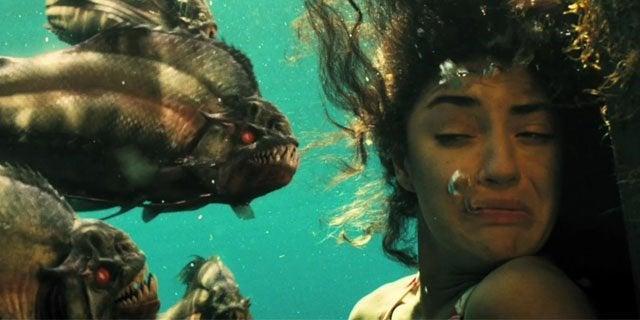
Much like its namesake accomplished 30 years earlier, Piranha 3D focused on delivering an audience an entertaining adventure as opposed to a believable premise.
When an earthquake opens up a chasm to an underwater lake, a prehistoric species of piranha emerges and begins to terrorize a popular spring break destination.
The film takes full advantage of the then-burgeoning 3D technology, delivering audiences buckets of blood and gore splattering across the entire screen. Not only does the film depict countless scenes of gruesome violence in ways other 3D films weren’t exploring, there’s just as much gratuitous nudity, challenging the limits of good taste with women who can’t keep their tops on and dismembered male appendages.
Crawl (2019)

While sharks might reign supreme in the realm of animal attack movies, crocodiles and alligators would likely help round out the top five creatures exploited for horror movies, many of which fall short in quality. The straightforward Crawl, however, allows the attacking alligators to serve as an allegory for the power of nature.
During a devastating hurricane, a young woman find herself descending into the crawlspace of her dilapidated home, only for the extreme weather to wreak havoc on the domicile and put her exit in danger. Additionally, the flooding waters have brought in multiple alligators, putting her in a race against time to escape the flooding basement while also forcing her to evade the reptiles.
Some of the best animal attack movies are the most simple, with Crawl serving as an effective example of how the more rudimentary a horror movie is, the more thrilling the adventure. Channeling the same spirit of Cujo, Crawl serves as an example of being in the wrong place at the wrong time and the impact of underestimating the power of Mother Nature.
Meg 2: The Trench lands in theaters on August 4th.
What are your favorite animal attack movies? Let us know in the comments or contact Patrick Cavanaugh directly on Twitter to talk all things Star Wars and horror!








